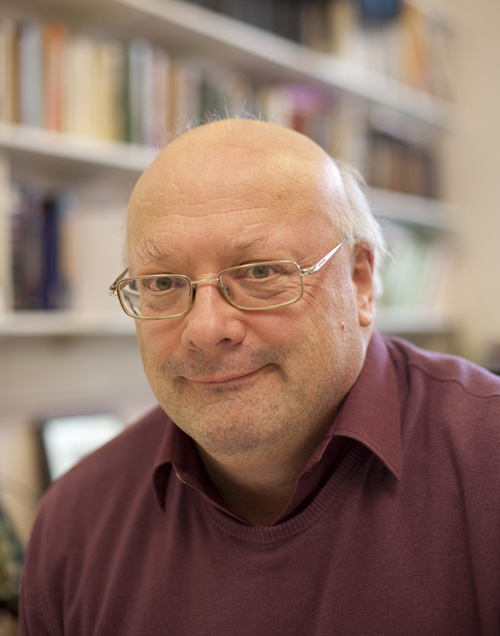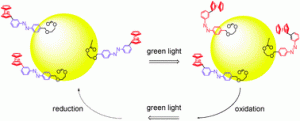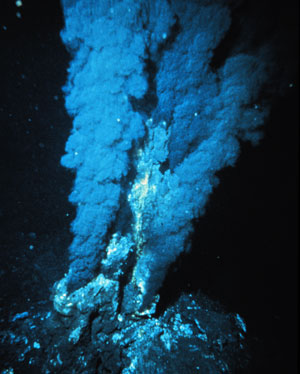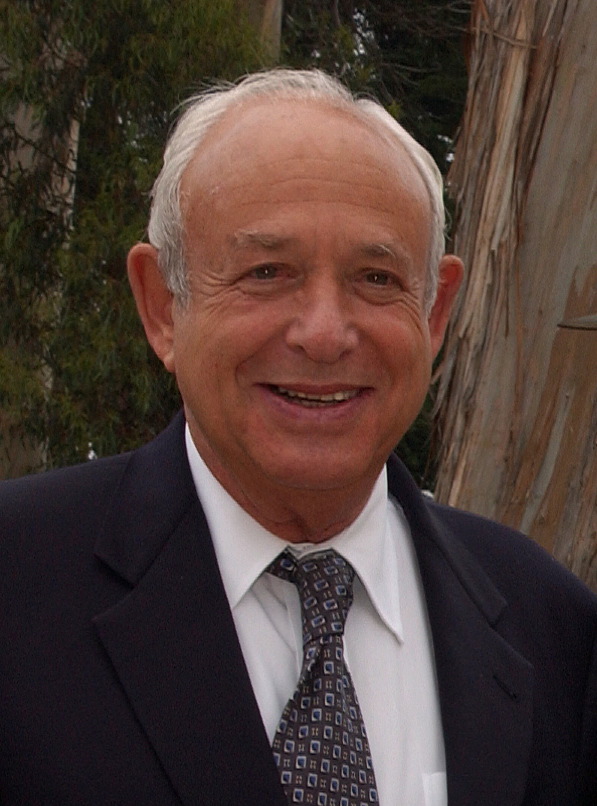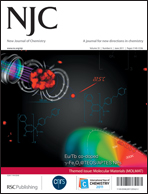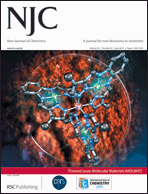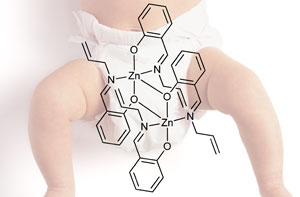We are pleased to present a selection of our authors from this July issue of NJC, who have kindly taken some time outside their research to answer a few questions for us…
Our first author is Richard G. Compton, Professor of Chemistry and Aldrichian Praelector at Oxford University (UK), whose research interests focus on Electrochemistry, Electroanalysis, Room Temperature Ionic Liquids and Nanoelectrochemistry. In their paper, Richard and his team report on the deposition of palladium nanoparticles onto carbon nanotubes and the use of the resulting high area nanocomposite as an electrode material for hydrogenolysis reactions. Such reactions are carried out without the need for hydrogen gas – rather the active hydrogen is electrolytically loaded into the palladium nanoparticles from bis(trifluoromethylsulfonyl)imide dissolved in a room temperature ionic liquid solvent. Thus, explains Richard, the method is highly convenient and represents an excellent example of the synergic use of nanoelectrochemistry and of ionic liquids to create an electrosynthetic route to replace a traditional chemical method.
Palladium nanoparticle-modified carbon nanotubes for electrochemical hydrogenolysis in ionic liquids
Yao Meng, Leigh Aldous, Ben S. Pilgrim, Timothy J. Donohoe and Richard G. Compton
New J. Chem., 2011, 35, 1369-1375, DOI: 10.1039/C1NJ20070D
On choosing NJC to publish this work, Richard comments that “we have always found NJC to provide an excellent service, most especially in terms of the quality and constructive nature of the referees reports. In addition the speed and professionalism of all our interactions with the journal have been invariably excellent.”
Ouside the lab, Richard and his group visit the Lamb and Flag pub in St Giles, Oxford to socialise, reflect and drink lager. “In fact the pub is owned (and run as a freehouse) by St John’s College where I teach and all profits are recycled in the form of graduate studentships. So our drinking actually contributes to those who will undertake research in the future!” he explains.

Our next author is Dr. Kumaresh Ghosh, Associate Professor of Chemistry at the University of Kalyani, India, whose research thematics cover molecular recognition and supramolecular chemistry, with a special emphasis on the design of chemosensors for neutral, cationic and anionic substrates. In their NJC article, Kumaresh and his coworkers intended to use simple molecules with hydrogen bonding information in designing chemosensors for anions of biological significance. They have used ortho- phenylenediamine in the design of a simple molecular sensor that is able to effectively sense and recognize fluorometrically phosphate group containing anionic substrates involving hydrogen bonds and pi-pi interactions in a cooperative fashion. “Stimulus came from our previous effort in the same direction using benzimidazolium motif”, comments Kumaresh. The authors chose NJC as ‘it is a journal of high impact and provides a shared platform where scientists of different areas can express their research views.”
A new ortho-phenylenediamine-based cleft for selective sensing of H2PO4- and ATP
Kumaresh Ghosh and Indrajit Saha
New J. Chem., 2011, 35, 1397-1402
DOI: 10.1039/C1NJ20116F
When asked of an alternative career path if not a scientist, Kumaresh wonders: “This is a difficult question. I like organic chemistry very much. I always enjoy designing molecules of special interest. Obviously, if I could not be a scientist, I would try to do something creative.”
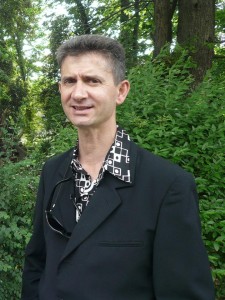 Now we meet Dr. Jean-Marc Escudier, CNRS researcher at the Université Paul Sabatier in Toulouse, France, whose research interests focus on Nucleic Acids Chemistry. Jean-Marc and his team aim at exploring new fields in nucleic acid chemistry, and of particular interest, the control of the shape and structure of the sugar/phosphate backbone, its impact on secondary structure formation ability and finally the possible modulation of protein/nucleic acids complex formation. This prompted their article published this month in NJC:
Now we meet Dr. Jean-Marc Escudier, CNRS researcher at the Université Paul Sabatier in Toulouse, France, whose research interests focus on Nucleic Acids Chemistry. Jean-Marc and his team aim at exploring new fields in nucleic acid chemistry, and of particular interest, the control of the shape and structure of the sugar/phosphate backbone, its impact on secondary structure formation ability and finally the possible modulation of protein/nucleic acids complex formation. This prompted their article published this month in NJC:
α,β-D-CNA featuring canonical and noncanonical α/β torsional angles behaviours within oligonucleotides
Arnaud Boissonnet, Christelle Dupouy, Pierre Millard, Marie-Pierre Durrieu, Nathalie Tarrat and Jean-Marc Escudier
New J. Chem., 2011, 35, 1528-1533
DOI: 10.1039/C1NJ20086K
On choosing the journal, Jean-Marc commented that NJC deserves the attention of the CNRS researchers (Editor’s note: NJC is owned by the CNRS and published monthly by the RSC) and moreover ‘it very recently published a themed issue on our topic of interest’*, he says.
Outside the lab, Jean-Marc enjoys free-riding on his mountain bike, on single downhill tracks, and would have liked to become an artist, especially a musician, if not a scientist.
 Closing this month’s selection, we are pleased to present Dr. Giacomo Saielli, Researcher at the CNR Institute on Membrane Technology, in Padova, Italy. Giacomo’s research focuses on Ionic Liquid Crystals and computational NMR. In the recent years, Giacommo and his coworkers have been interested in viologen salts because of their many important properties both as materials (e.g. they form ionic liquid crystal phases) as well as for their molecular properties in solution, particularly anions recognition. As a step further, they wondered
Closing this month’s selection, we are pleased to present Dr. Giacomo Saielli, Researcher at the CNR Institute on Membrane Technology, in Padova, Italy. Giacomo’s research focuses on Ionic Liquid Crystals and computational NMR. In the recent years, Giacommo and his coworkers have been interested in viologen salts because of their many important properties both as materials (e.g. they form ionic liquid crystal phases) as well as for their molecular properties in solution, particularly anions recognition. As a step further, they wondered
whether the easy modulation of the oxidation state could be used for the recognition of neutral species as well, such as fullerenes. As shown in their NJC article, the results of the theoretical investigation strongly support this hypothesis.
DFT study of the interaction free energy of π–π complexes of fullerenes with buckybowls and viologen dimers
Girolamo Casella and Giacomo Saielli
New J. Chem., 2011, 35, 1453-1459, DOI: 10.1039/C1NJ20117D
“We appreciate RSC journals and we were looking for a general chemistry forum: NJC appeared as the natural choice”, says Giacommo. In his spare time, Giacommo enjoys reading and would appreciate life as a farmer somewhere in beautiful Tuscany, if not a scientist!
We warmly thank our July authors for sharing their views and chemistry with us!
If you have had a recent NJC publication and are interested in featuring in our ‘meet our authors’ entries, then please get in touch with us at the NJC Editorial Office.
*NJC recently published a themed-issue on Biophosphates, guest-edited by Barbara Nawrot and Jean-Pierre Majoral, covering amongst others the chemical synthesis and mechanistic studies of nucleotides and oligo- nucleotides, inhibitors of enzymes associated with cancer and gene expression inhibitors, models for structural studies, nucleic acid analogs as tools for the investigation of metabolic processes and potential therapeutics…. Why not have a look now it now: NJC 2010 Issue 5


